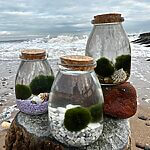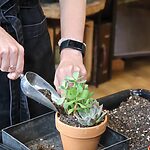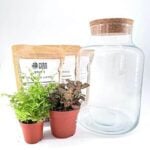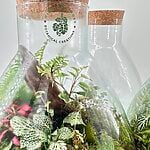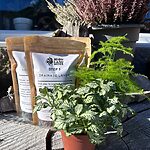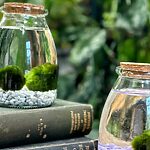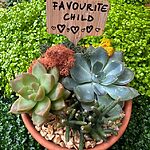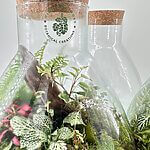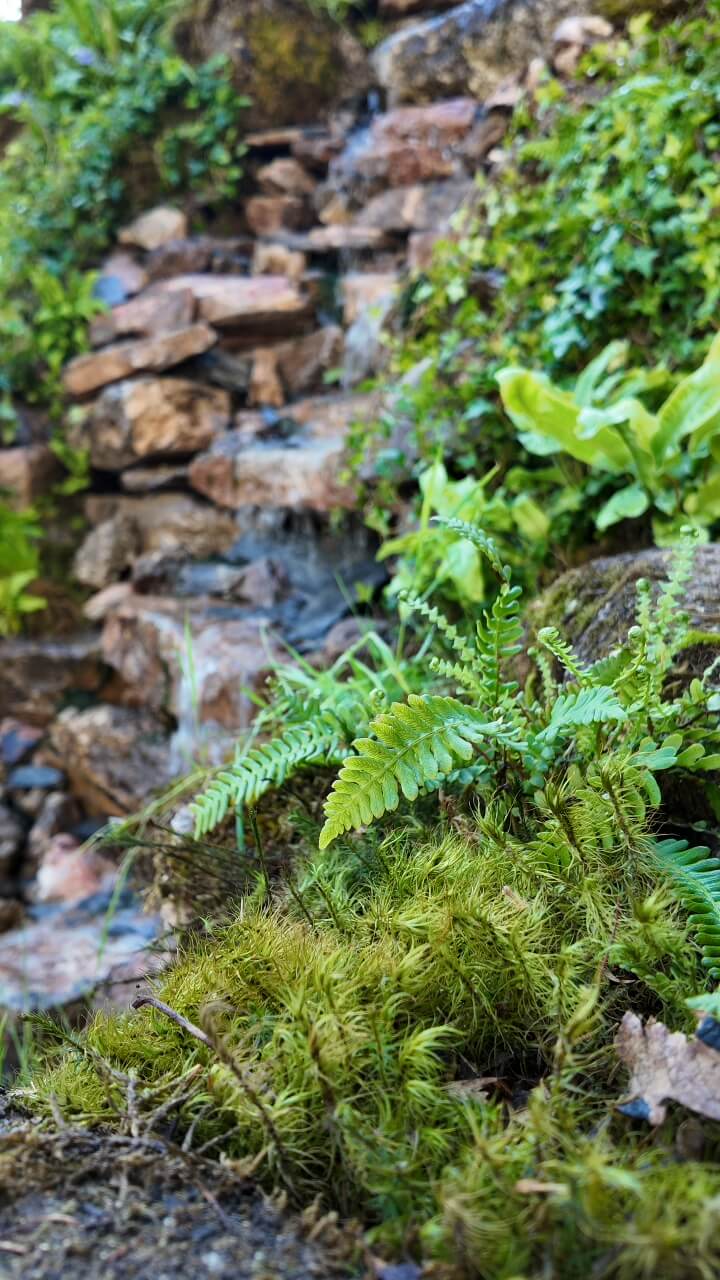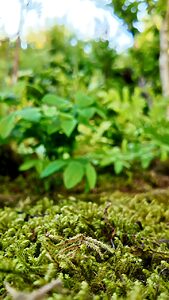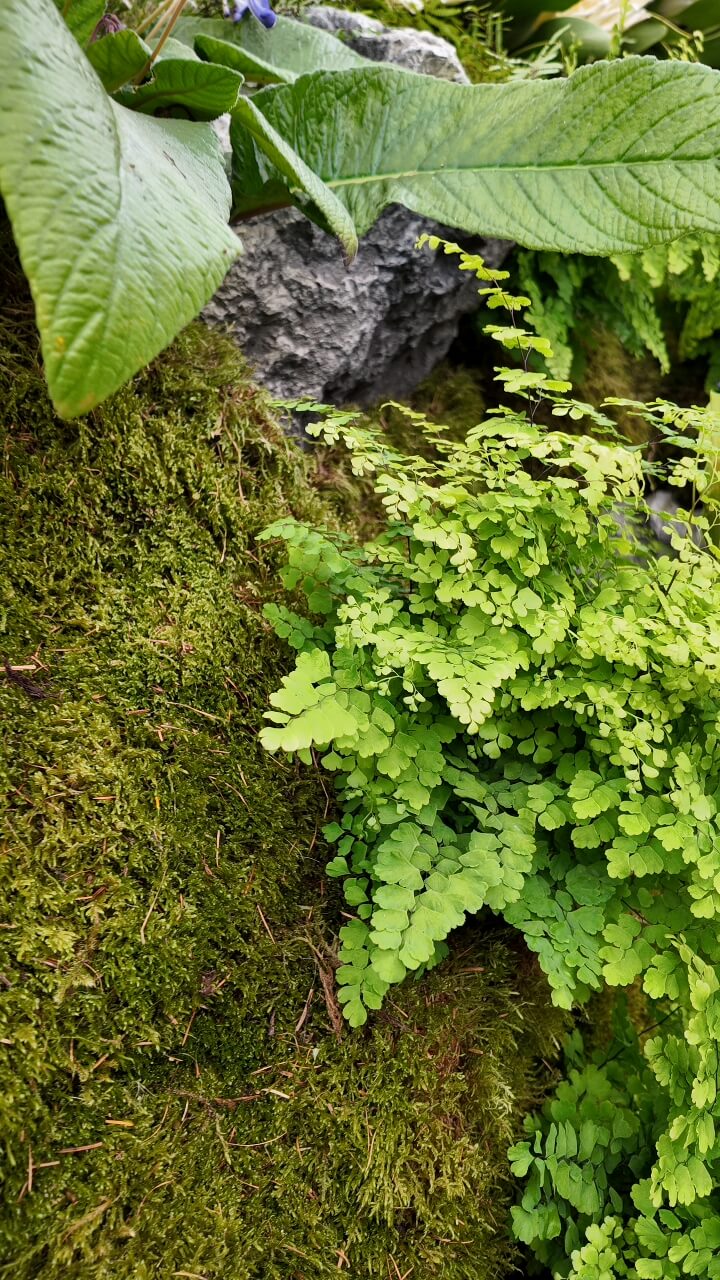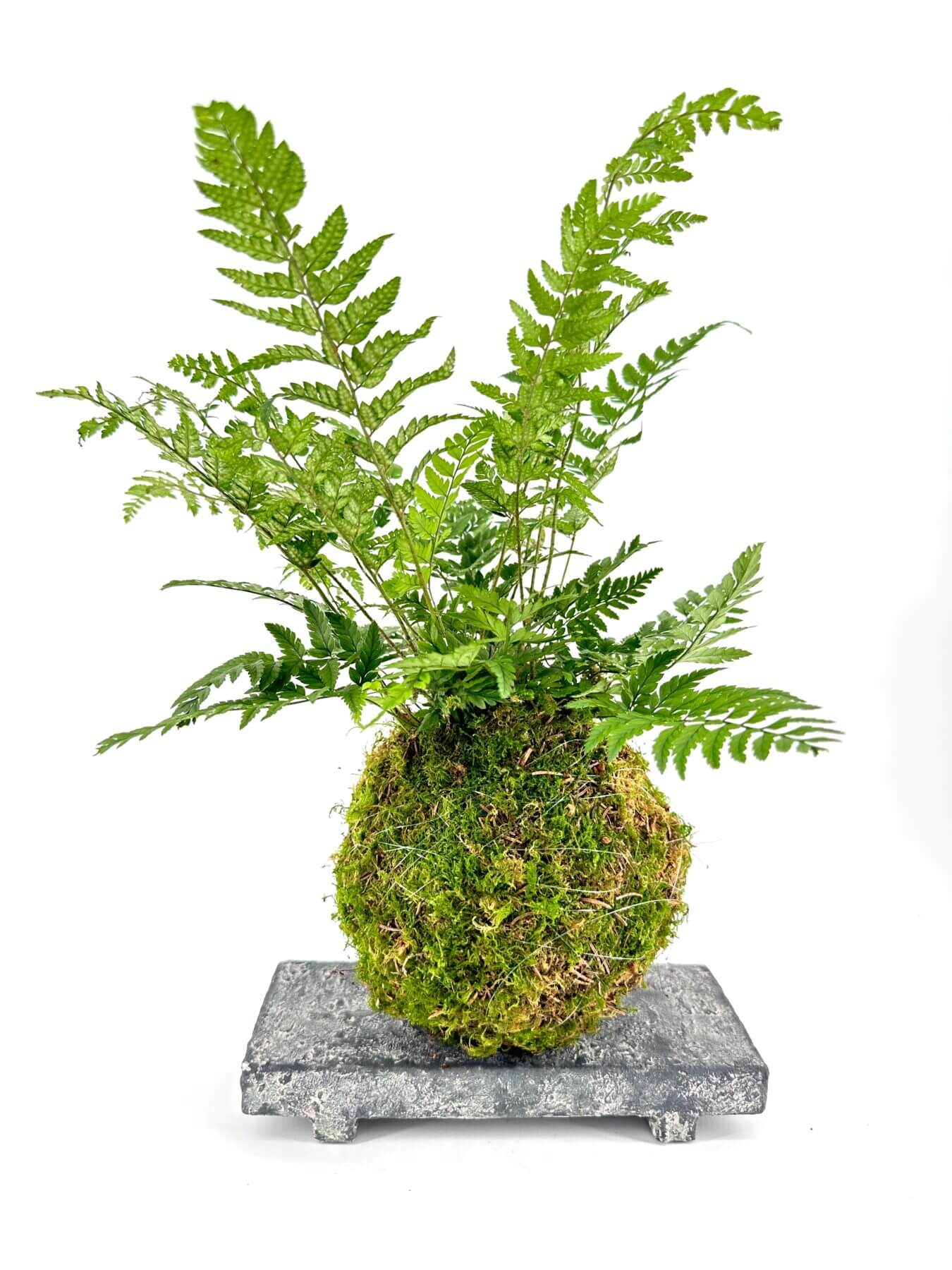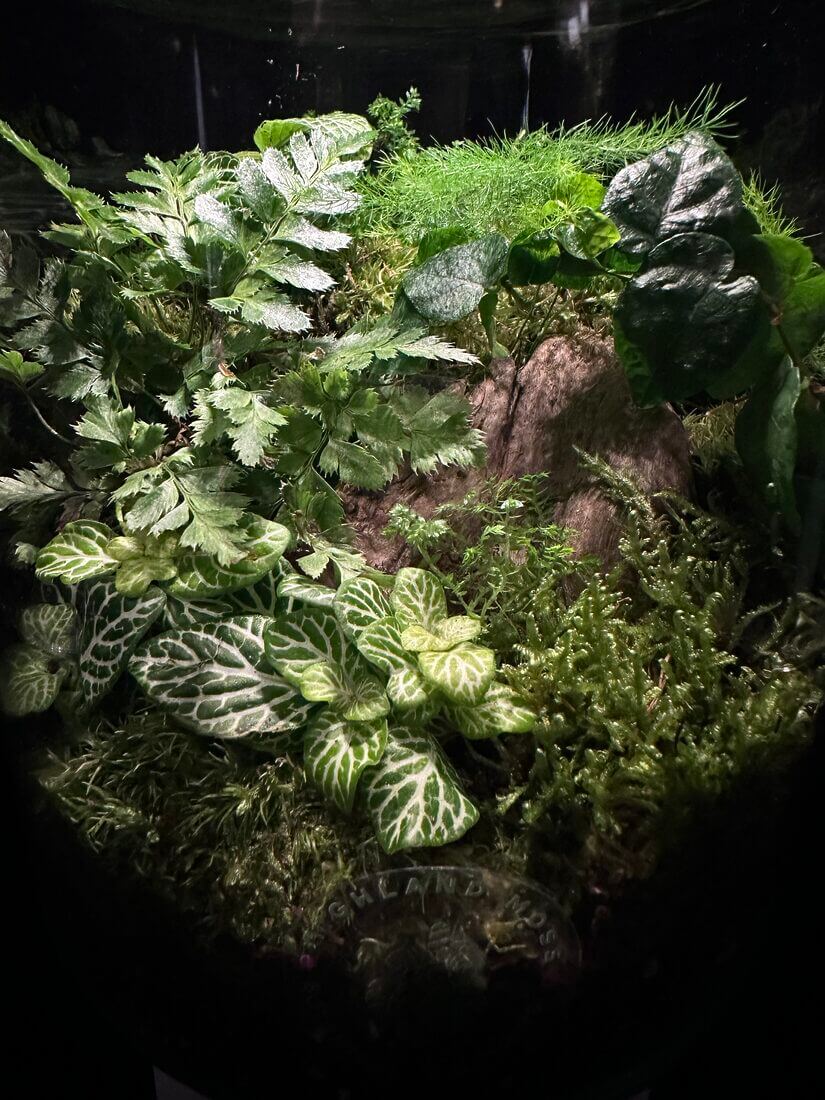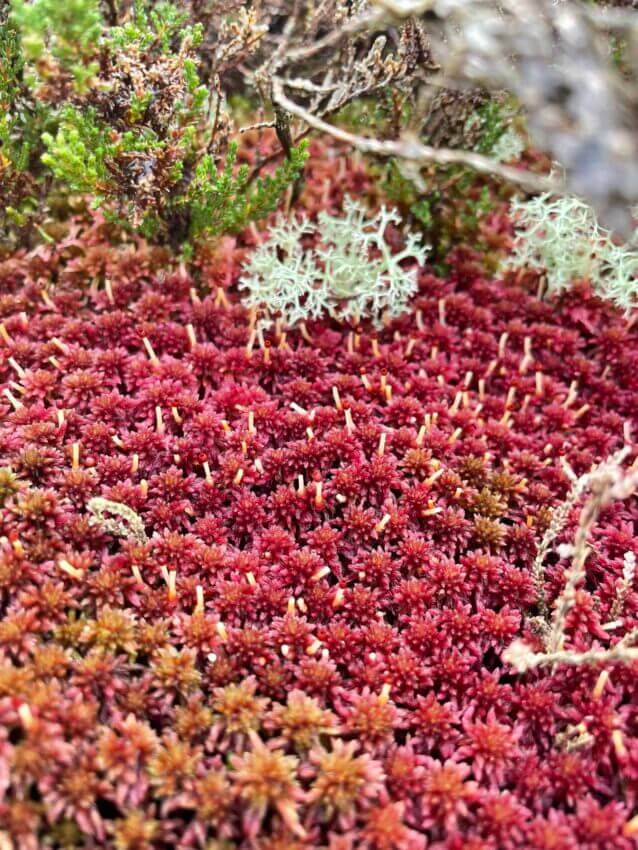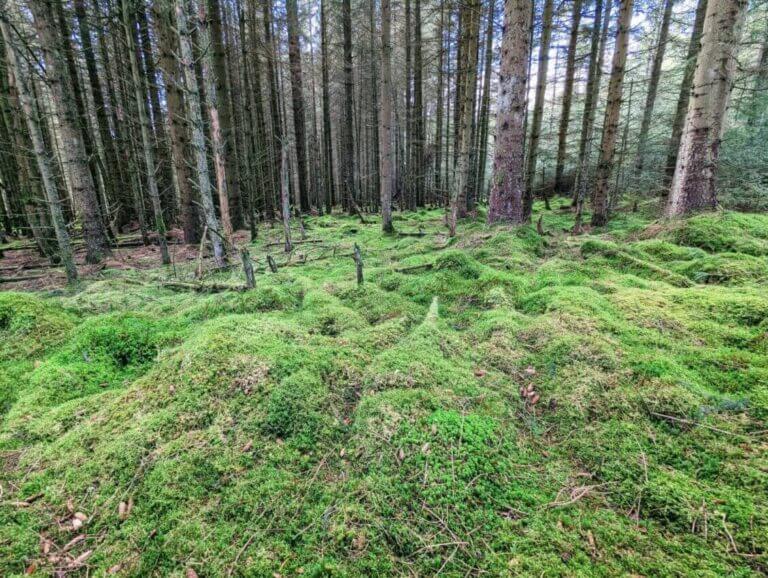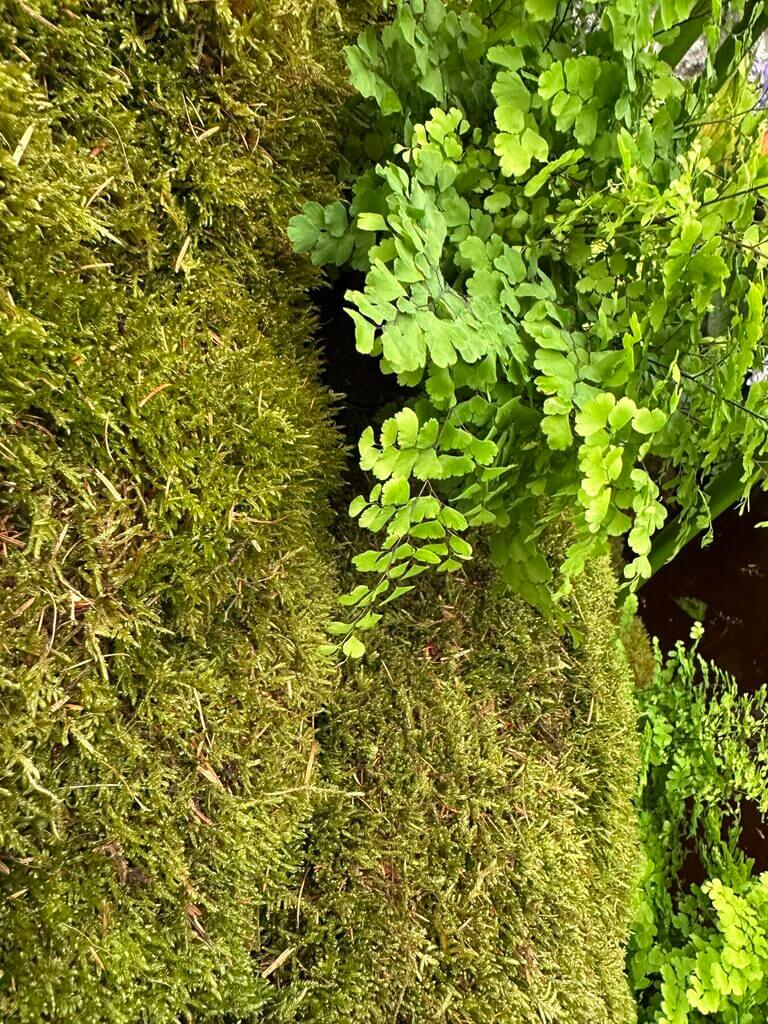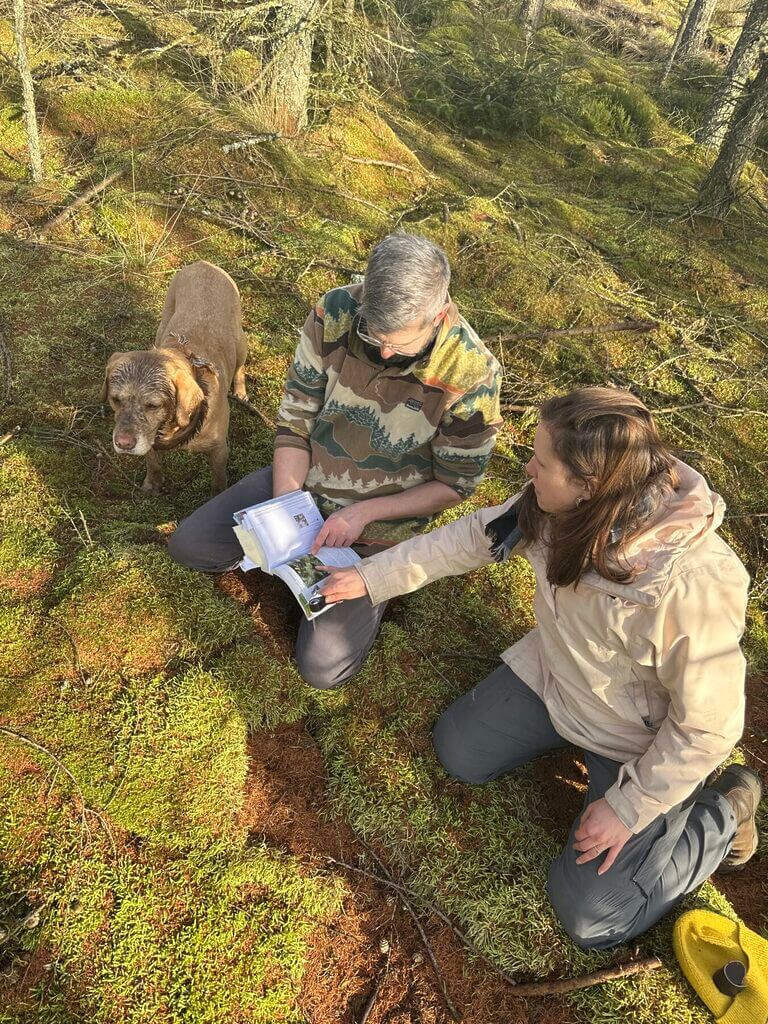
Moss takes the spotlight:
What an incredible week at RHS Chelsea Flower Show 2025 – moss is no longer the underdog but a celebrated star of the show’s top gardens! We’re thrilled to share that Highland Moss (our family business in Aberdeen) had our lush Scottish moss featured in five different gardens at Chelsea this year. From tropical displays to woodland landscapes, designers embraced moss in a big way. We’ve been blown away by all your messages and interest following the show – thank you so much! Now, for everyone who’s curious about moss, let’s dive into what this ancient plant is all about, why it’s so useful, and how you can bring a bit of that Chelsea moss magic to your own garden or business project.
What is Moss? (Botany Basics)
Mosses are small, primitive plants classified as bryophytes, which also include liverworts and hornworts. They’ve been around for hundreds of millions of years – fossils show moss-like plants thriving over 450 million years ago, long before the first trees or flowers appeared. In fact, mosses are among the oldest land plants on Earth, predating even the ferns. Despite their tiny size, they’ve clearly stood the test of time!
Here are a few key things that make mosses unique:
- No roots or seeds: Unlike most plants you know, mosses don’t have true roots, nor do they have flowers or seeds. Instead, they anchor themselves with thread-like rhizoids and absorb water and nutrients directly through their leaves. They reproduce via spores (tiny dust-like particles) rather than seeds– similar to how ferns reproduce. This simple, ancient strategy works well in the moist environments mosses favor.
- Non-vascular: Mosses lack the vascular tissue (xylem/phloem) that larger plants use to transport water internally. Because of this, mosses stay fairly small and low-growing – typically forming soft mats or cushions on surfaces. Instead of roots to suck up water, they act like sponges, soaking up moisture over their whole surface. Touch a patch of healthy moss and you’ll often feel it cool and damp – it’s holding a lot of water!
- Thousands of species: There is an amazing variety of mosses out there – about 12,000 species worldwide, found everywhere from tropical rainforests to arctic tundra. They can be emerald green, but also golden, silvery, or reddish depending on the type. Each species has its own texture and growth pattern (some form flat carpets, others upright little sprigs or feather-like tufts). This diversity means there’s a moss for almost every niche and creative use.
Moss in Ecosystems: Little Plants, Big Benefits
Moss isn’t just decoration – in the wild, it plays a crucial role in helping ecosystems thrive. Here are some of the impressive ways moss supports the environment:
- Moisture Retention: Mosses act like natural sponges, absorbing and holding water. Sphagnum moss, for example, can hold up to 20 times its dry weight in water! By soaking up rain and dew, mosses slow down runoff and help maintain humidity in their habitat. This is vital in places like bogs and forests – moss keeps the soil beneath from drying out quickly and can even regulate small water cycles. Garden experts note that moss-rich areas stay damp longer and can even help absorb excess water in boggy spots. In a world of increasing droughts and floods, these little green sponges are unsung heroes in water management.
- Habitat & Biodiversity: A moss carpet is teeming with life. It provides shelter, bedding, and even food for countless small creatures. Tiny invertebrates (like insects, spiders, and tardigrades or “water bears”) live among moss strands. Small mammals like shrews may use mossy areas for cover, and birds famously pluck up moss to build nests that are soft and well-insulated. In a mossy patch, you have a whole micro-ecosystem: one study called mosses “biodiversity hotspots” that maintain soil microbes and foster nutrient cycling. By welcoming moss, you’re inviting a richer web of life into the garden – from beneficial bugs to pollinators that might shelter there.
- Erosion Control: Mosses are fantastic for soil protection. They often colonize bare soil or rocks where other plants can’t grow, binding loose soil with their filamentous rhizoids. After events like wildfires, certain mosses quickly cover the ground, helping prevent erosion by wind and rain. Even a thin moss layer can shield soil from heavy raindrop impact and reduce runoff. Gardeners use moss on slopes or stream banks as a natural erosion control measure. The moss’s sponge effect also slows water flow, further protecting against wash-outs. It’s like a living blanket keeping the earth cozy and in place.
- Soil Formation & Carbon Storage: Moss is a pioneer plant – it can grow on raw rock or log surfaces, where it traps dust and organic matter to create new soil over time. As mosses and the debris they collect decompose, they add organic matter and nutrients to the ground, gradually turning inhospitable spots into fertile soil where other plants can take root. In wetlands, layers of dead Sphagnum moss form peat, an accumulation of partially decayed plant material. Peat bogs are incredible carbon sinks – storing carbon that would otherwise be released as CO₂. This means moss not only helps build soil, but also contributes to climate regulation by locking away carbon for millennia. (Fun fact: Peat bogs globally store more carbon than all the world’s forests!)
From providing a moist nursery for seedlings, to feeding woodland critters, to literally holding the planet’s soil and carbon together – moss punches well above its weight in ecological importance. No wonder designers at Chelsea are urging us not to overlook this “amazing plant”
Uses of Moss in Gardening, Landscaping, and More
Moss isn’t just for show gardens – it’s a fantastic addition to everyday gardens, landscapes, and even interior design. In fact, moss has been admired and used in gardens for centuries. (In Japan, moss is revered as a symbol of harmony and age – some temple gardens have cultivated rich moss carpets for over 1,000 years! Talk about staying power.) Here are some of the ways you can use moss, from practical gardening solutions to creative decor:
Groundcover in Shade Gardens
If you have a damp, shady area where grass struggles, moss can be a beautiful lawn alternative. A moss lawn or pathway gives a lush, green look without needing mowing or fertilizer, and it feels like velvet underfoot. Moss naturally thrives under trees or beside water features where other plants might not. Gardeners often encourage native mosses to fill in shady bare spots – or transplant patches of sheet moss to create an instant green carpet. Just keep the area moist and remove leaves or debris, and the moss will gradually spread. The result is a serene, evergreen groundcover that evokes a woodland vibe.
Accents in Landscape Design
Moss is a superb design element for adding texture and contrast. It softens hardscapes by growing between stepping stones, on rock walls, or over the edges of fountains and ponds. Landscape designers use moss to create “wild,” natural-looking scenes – for example, a mossy log or boulder as a garden focal point. At Chelsea this year, we saw designers incorporate moss to capture the feel of a lush rainforest and to highlight sustainable, biodiverse planting. Even in a modern minimalist garden, a cushion of moss or sheet of feather moss at the base of a sculpture or in a container can introduce a pop of calming green. Moss instantly gives any garden a mature, established look (it’s the essence of “weathered charm”). Japanese gardens and zen gardens often feature moss around stones and lanterns to symbolize antiquity and peace.
Moss Art and Decor
The trend of moss art and moss walls has taken off as people seek more nature indoors. You might have seen those gorgeous green walls in offices or cafes – many use preserved moss arranged in patterns. Moss can be framed like a painting or used to spell out logos and signs (it stays green without water when preserved). We create custom moss art pieces at Highland Moss, as preserved moss retains its color and texture with no upkeep. Live moss can also be used for a living wall or a moss graffiti mural, though it needs regular misting. Additionally, there’s the Japanese art of kokedama, where a plant’s roots are wrapped in a ball of moss and string – creating a living ornament you can hang or display in a dish. Kokedama are essentially living moss planters and are very decorative. Whether it’s a moss centerpiece on a table or a green backdrop in a shop, moss brings a soothing, biophilic touch to man-made spaces.
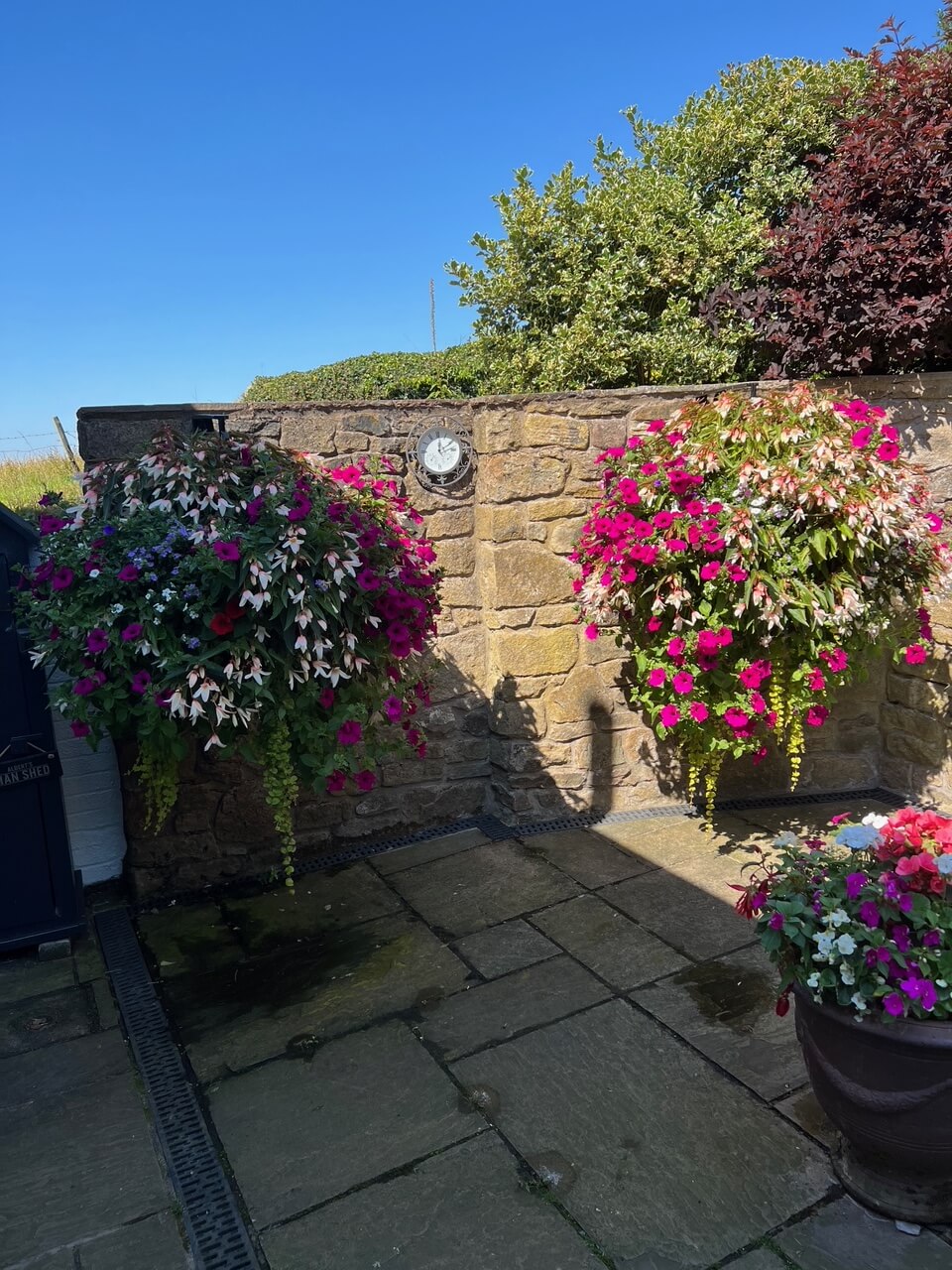
Practical Garden Uses
Don’t forget the humble but handy uses of moss in everyday gardening! Lining hanging baskets with sphagnum or sheet moss is a traditional technique – it holds soil in and keeps roots cool and moist. Moss is used to cover the soil in potted plants (both to retain moisture and for a finished look). It’s great around the base of bonsai trees to simulate grass and help with moisture. We also use long-fiber sphagnum moss to wrap around moss poles for climbing houseplants – the moss holds water and encourages aerial roots to latch on. In floral arrangements, florists place moss on top of pots or oasis foam to hide mechanics and add freshness. Because moss is so lightweight when dry, you can glue it onto almost anything for a green effect – we’ve seen moss used on event decor, lanterns, and even as part of green roof installations on small sheds or birdhouses. It’s truly a multipurpose material for creative gardeners!
Terrariums, Vivarium and Indoor Gardens
Terrariums, vivarium and Indoor Gardens: Moss is a staple for terrarium enthusiasts. Because it stays small and loves humidity, moss is ideal for creating miniature landscapes in glass containers. You can craft a whole forest scene in a jar with just moss and a few small ferns or twigs. It will keep the terrarium humid by releasing stored water slowly, creating a self-sustaining cycle. In frog or reptile vivariums, live moss helps maintain moisture and gives pets a natural, soft surface. Species like Dicranum and cushion moss are popular picks for terrariums. Moss terrariums are also a fun, low-maintenance way to bring nature indoors – just mist occasionally and enjoy your tiny green world.
From show-stopping garden exhibits to small DIY projects, moss is incredibly versatile. It suits ultra-modern designs just as well as it does enchanted cottage gardens. And perhaps the best part: moss is low maintenance. In the right spot (cool, shady, moist), it practically takes care of itself – no mowing, no feeding, and it naturally resists pests and diseases. Embracing moss is a win for you and for the environment
An Invitation to Get Mossy
We hope this gave you a deeper appreciation for the world of moss – it’s not just that “green stuff” on rocks, but a whole universe of tiny plants with big benefits and uses! If you’re feeling inspired to add some mossy wonder to your own garden, terrarium, or design project, we’re here to help. Highland Moss specializes in providing top-quality, sustainably harvested live moss (hand-picked in Scotland) for hobbyists, gardeners, and businesses alike. Whether you need a specific moss for a landscape installation or just a bit of advice on how to get a moss lawn started, feel free to reach out to us. We’re passionate about all things moss and love guiding fellow moss enthusiasts – from first-timers to award-winning designers.
🪴 Email us at Contact@HighlandMoss.com for any moss supplies or questions – we can recommend the perfect moss for your project and ship it to you fresh and ready to grow. Let’s work together to bring a touch of that RHS Chelsea moss magic into your own space. Thank you for reading, and happy moss gardening! Enjoy your green adventures! 🪴🪴
Wholesale Moss & Custom Garden Projects
Are you a garden designer, landscaper, or planning your own moss garden—at home or for a show? Share your ideas and we’ll help you choose the perfect moss for your project.
Thanks,
The Highland Moss Team
Proud moss supplier to five RHS Chelsea Flower Show 2025 gardens 🪴


